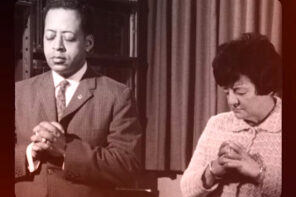Steve Fuller seems to enjoy playing the traitor. Despite being, as he has variously called himself, a “secular humanist” and “philosophical naturalist,” Fuller testified on the ill-fated side of intelligent design theory at the 2005 trial in Dover, Pennsylvania; he argued that foisting ID on schoolchildren would be an advisable form of “affirmative action” because it has such a hard time gaining traction among actual scientists.
He likes telling the atheism-prone scientific community that the whole enterprise actually depends on religion. Such treasonous tendencies might only shed light on the otherwise innocent fact that this American-born philosopher of science has spent the last decade and a half working in England.
Instances of iconoclasm, together with proud pop-culture references, appear on virtually every arresting page of Science—in fact, his second book with that title. This Science comes as part of an intriguing series on “The Art of Living,” and so Fuller frames its thesis like this: “the art of living scientifically involves taking theology much more seriously than either practicing scientists or religious believers are inclined to do.”
He celebrates an emerging trend dubbed “Protscience,” a kind of Reformation against the imperious priesthood of the scientific establishment. While the establishment preaches dead-end atheism, the often-religionist Protscience guerrillas offer to restore the spirit—and the metaphysics—that gave us science in the first place. Then and now, Fuller contends, God the lawgiver/designer/intervener makes a better mascot for good research than any lack thereof that atheism or agnosticism have to offer.
In a revealing “Further Reading” section, he cites the accomplishments of his friends at the ID-friendly Discovery Institute unironically and uncritically; but not altogether uncynically. If actually a naturalist at heart, he is calling for more religion not because it is true so much as because it might trick us into doing better science. The book, then, can feel at times like a calculated whisper in the theist’s ear that she can have her religious triumphalism and her science too.
Much of his polemic, really, is a strong way of saying what is entirely uncontroversial among historians of science, even if easily forgotten by most everyone else. And who can blame us? The gist of it is utterly unmemorable: the relationship between science and religion is, and has been, complicated. Fuller addresses the public relations problem with hyperbole aimed against the conventional wisdom that science and religion are opponents from the get-go.
He summons famous and obscure examples of how Christian theology, far more than Enlightened skepticism, midwifed the emergence of science: Isaac Newton fancied himself discovering the mind of God in the laws of nature; Joseph Priestly was a theologian as well as the chemist who discovered oxygen; David Hume, now sometimes held up as a champion of science-like inquiry, was really no more hopeful about science than about religious speculation; and materialism, especially wielded by Nazis and Stalinists, corrupted evolutionary science much more than advancing it. The origin story Fuller offers for the scientific mentality is not to be found with Galileo against the Inquisition, or with Francis Bacon’s experimental method, but in Genesis itself: God’s promise to Abraham of a rosier future to come.
At moments more persuasive than that last one, Fuller insists on the fact that religious belief can be an entirely plausible worldview through which to do science. He also reminds us that some theologies are more scientific than others; apparent conflicts between science and religion demand a more careful idea of each, not jettisoning one for the other. His posture, finally, should encourage nonbelievers to have a healthier appreciation for what they have inherited from essentially religious ideas, and to remember that some atheisms are more scientifically sound than others. These are points that cannot be repeated enough nowadays on all sides of the science-and-religion wars, and Science makes them in ways not easy to dismiss.
For all its mnemonic charms, however, overstatement has shortcomings. Fuller asserts that atheism has done little good for science even while noting the fact that most leading scientists don’t believe in God or practice a religion. Scientists on the whole are much less likely than the general population to be religious, and the more accomplished they are, the less religious they tend to be. This is a powerful piece of evidence that invites one to qualify Fuller’s claims, but he does little better than to ignore it.
To say that there are continuities between the history of theology and the history of science doesn’t mean you have to rule out discontinuities too. Fuller for instance chooses not to accept Hans Blumenberg’s powerful case, in his sprawling The Legitimacy of the Modern Age, that there was a basic rupture between the transcendence of Christian theology and the this-worldly immanent order that science presupposes—a rupture, actually, rooted in theology itself.
There is more truth in this than Fuller allows; immanentism raises questions in cases where theism can seem to give easy answers. It was the immanentist Spinoza who bothered to anticipate later biology by wondering whether “men are not created, but only generated, and that their bodies already existed before, though formed differently.” The same apostate Jew spent his now-less-remembered hours grinding lenses for telescopes, while even Newton spent his poring over prophecies in the Book of Daniel.
The very analogies by which Fuller means to stitch the history science to faith unravel in his hands. Grace is not the same as accumulating knowledge. Intelligent design isn’t the same as the appearance of order. Expectant hope (whether of the kind Abraham had in Genesis or Tim LaHaye expresses in the Left Behind books) is not the same as scientific progress. Biblical literalism is not the same as laboratory experimentation. To claim that the national science academies today are akin to the Vatican in Galileo’s time is to lend far too much credit to the academies’ political power and too little to their costumes. There may be some resemblance in each case, but it is precisely in the differences that the practice of science begins to be recognizable as such.
Understood thus as a practice—or, so to speak, as an “art of living”—there are proximate causes other than theology on hand for science’s development and sustenance. Europe and North America in the latter half of the second millennium had social arrangements, natural resources, habits of mind, and geopolitical competition that make for satisfying just-so stories too; only the most theologically self-confident would chalk it all up to religion. The globalization of science now underway, particularly as more and more important research takes place in non-Christian countries like China and Japan and by their nationals working in the West, a totally theology-centric narrative seems less and less plausible.
But even an anecdotal survey of what ways of thinking uphold the everyday habits of science today don’t quickly draw one’s mind to religion, nor do they necessarily stand in opposition to it. As in any profession, there are professionals competing for advancement and respect by trying to outdo each other in highly specialized contests, accumulating accomplishments that outsiders can’t begin to comprehend. All this depends on particular personality traits which, combined with lots of discipline and practice, amount to tremendous facility in the intellectual and technological tools of a given field. It’s paid for by private and public agencies which, in turn, steer research priorities. Science has also concocted its own narratives that serve some of the functional roles that religious ones otherwise might; I wonder what would have become of Fuller’s book had it focused not on theology but on science fiction, from Bishop Francis Godwin’s The Man in the Moone to Star Trek.
If one were to cynically choose a modern religious option best suited to motivating scientific research, New Age and other metaphysical spiritualities might fare better anyway than intelligent design Christianity. Among their practitioners, evolution and progress are not bywords for heresy but, by and large, cosmic law. Quantum mechanics, which Christianity either tolerates or ignores, feels more intuitive to them than staid Newtonianism. And, while Christians grapple to find their notion of the soul in the latest neuroscience, metaphysicals (together with the Dalai Lama) can’t get enough of it.
Fortunately, we don’t have to choose. Science as a way of living doesn’t depend utterly on theology. An evangelical can map the human genome, an atheist can unravel the big bang, and a Buddhist can be twice as likely to become a scientist than the average American. In any case a theology worth having, as an art of living on its own terms, should offer us something better than a motivation to do more science. Science, by now, can fend for itself.




